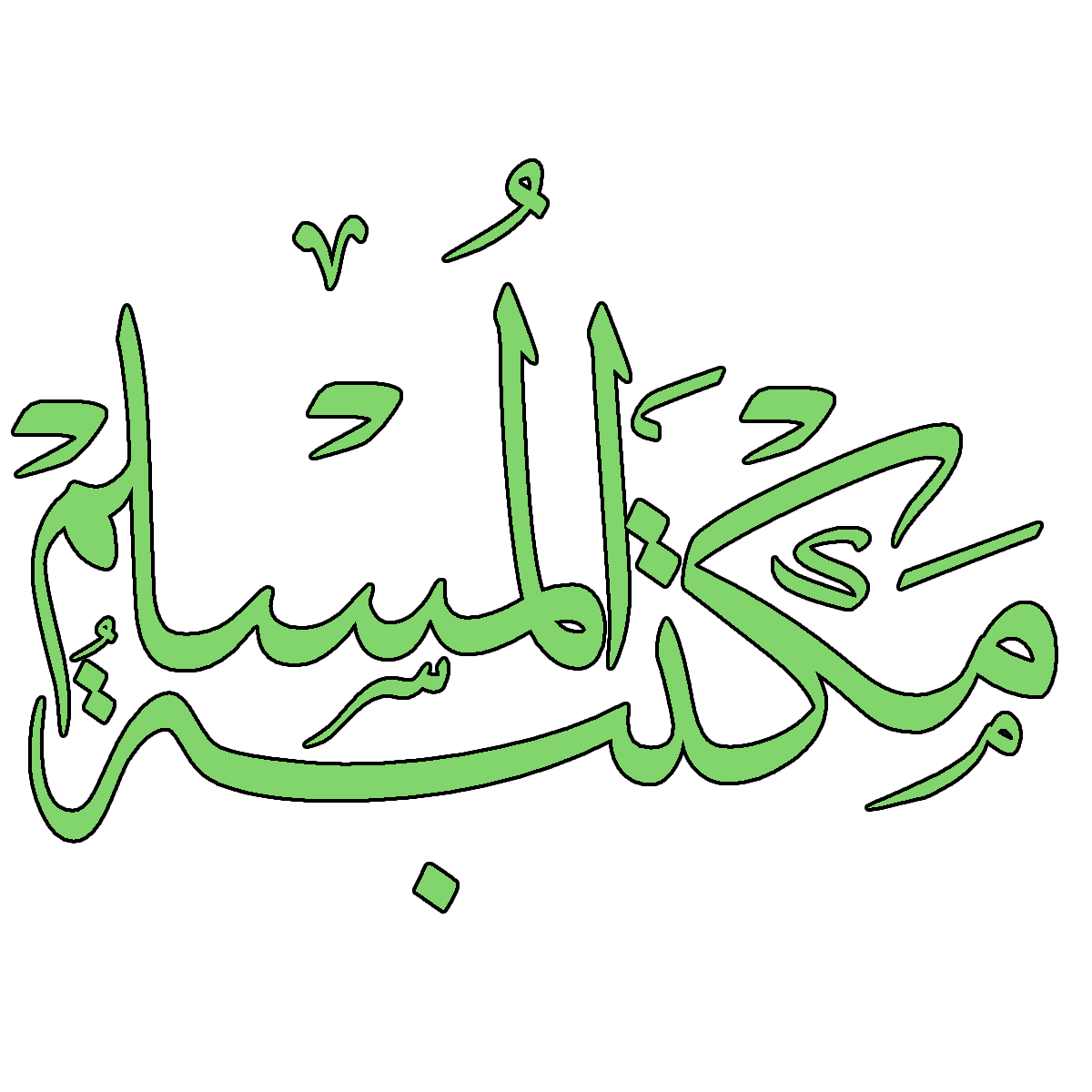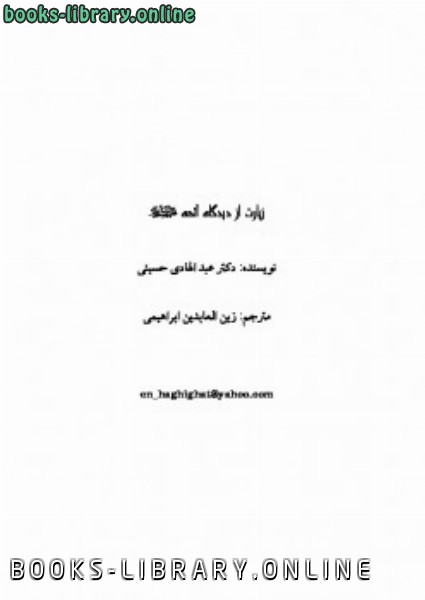كتاب The History of the Quranic Text from Revelation to Compilation A Comparative Study with the Old and New Testaments
his work comprises a short introduction to the history of the Q ur’an, its recording and its collection. The reader may therefore be puzzled as to why one third of the material in this book tackles the O ld Testament (OT) and the New Testament (NT), wondering w hat significance this has on tire Q ur’an’s history. This significance shall, I hope, be made clear as the chapters progress, since I-have attempted to present only those details which have a direct bearing on the current subject matter. I TTif ii-ien of mitHririno- a hnnk about the O ur’an. about its collection and immaculate preservation, had long germinated in myj mind, and approx imately three and half years ago I finally began working on this book along side another entitled Islamic Studies: W hat Methodology? It! was journalist Toby Lester’s article in The Atlantic M onthly (January 1999) hojvever, and the chaos it had the potential to sow among Muslims, which prom pted a greater believing in the Q ur’an as the unadulterated Book of Allah, were thoroughly incapable of defending this view in any scholarly fashion. The gauntlet was thrown, and I felt it necessary to take on this challenge and explain the stringent methodology used by early Muslim scholars in accepting a text as genuine, or rejecting it as fake. This has lead to the unavoidable repetition of some material in both books. As most of the scholars that Lester quotes are either Jews or Christians, I also considered it fitting to cover the histories of the O ld and New Testaments by way of comparison. This should help the reader to regard the disparity of opinions between Muslim and O ri entalist scholars with a fair measure o f insight. | With their insistence on a purely oral transmission, most Orientalists reject all reports that cite recording and compilation of the Q ur’an during the Prophet M uham m ad’s lifetime. M any of them even deny that any final compilation occurred during Abu Bakr’s reign, while some accept the role of the third caliph ‘Uthman in this regard. Only ffte m y e a r s lapsed between the Prophet’s death and ‘U thm an’s distribution of written copies of the Q ur’an to different provinces of the Muslim world. Viewing this interval The author said in his introduction: This work comprises a short introduction to the history of the Quran, its recording and its collection. The reader may therefore be puzzled as to why one third of the material in this book tackles the Old Testament OT and the New Testament NT , wondering what significance this has on the Quran’s history. This significance shall, I hope, be made clear as the chapters progress, since I have attempted to present only those details which have a direct bearing on the current subject matter.محمد مصطفى الأعظمي - ❰ له مجموعة من الإنجازات والمؤلفات أبرزها ❞ دراسات في الحديث النبوي وتاريخ تدوينه ❝ ❞ The History of the Quranic Text from Revelation to Compilation A Comparative Study with the Old and New Testaments ❝ الناشرين : ❞ المكتب الإسلامي للطباعة والنشر ❝ ❱
من كتب إسلامية بلغات أخرى - مكتبة كتب إسلامية.

قراءة كتاب The History of the Quranic Text from Revelation to Compilation A Comparative Study with the Old and New Testaments أونلاين
معلومات عن كتاب The History of the Quranic Text from Revelation to Compilation A Comparative Study with the Old and New Testaments:
his work comprises a short introduction to the history of the Q ur’an, its
recording and its collection. The reader may therefore be puzzled as to
why one third of the material in this book tackles the O ld Testament (OT)
and the New Testament (NT), wondering w hat significance this has on
tire Q ur’an’s history. This significance shall, I hope, be made clear as the
chapters progress, since I-have attempted to present only those details which
have a direct bearing on the current subject matter. I
TTif ii-ien of mitHririno- a hnnk about the O ur’an. about its collection and
immaculate preservation, had long germinated in myj mind, and approx
imately three and half years ago I finally began working on this book along
side another entitled
Islamic Studies: W hat Methodology?
It! was journalist Toby
Lester’s article in
The Atlantic M onthly
(January 1999) hojvever, and the chaos
it had the potential to sow among Muslims, which prom pted a greater
believing in the Q ur’an as the unadulterated Book of Allah, were thoroughly
incapable of defending this view in any scholarly fashion. The gauntlet was
thrown, and I felt it necessary to take on this challenge and explain the
stringent methodology used by early Muslim scholars in accepting a text
as genuine, or rejecting it as fake. This has lead to the unavoidable repetition
of some material in both books. As most of the scholars that Lester quotes
are either Jews or Christians, I also considered it fitting to cover the histories
of the O ld and New Testaments by way of comparison. This should help
the reader to regard the disparity of opinions between Muslim and O ri
entalist scholars with a fair measure o f insight.
|
With their insistence on a purely oral transmission, most Orientalists
reject all reports that cite recording and compilation of the Q ur’an during
the Prophet M uham m ad’s lifetime. M any of them even deny that any final
compilation occurred during Abu Bakr’s reign, while some accept the role
of the third caliph ‘Uthman in this regard. Only
ffte m y e a r s
lapsed between
the Prophet’s death and ‘U thm an’s distribution of written copies of the
Q ur’an to different provinces of the Muslim world. Viewing this interval
The author said in his introduction: This work comprises a short introduction to the history of the
Quran, its recording and its collection. The reader may therefore be puzzled as to why one third of the material in this book tackles the Old Testament OT and the New Testament NT , wondering what significance this has on the Quran’s history. This significance shall, I hope, be made clear as the chapters progress, since I have attempted to present only those details which have a direct bearing on the current subject matter.
للكاتب/المؤلف : محمد مصطفى الأعظمي .
دار النشر : .
عدد مرات التحميل : 4610 مرّة / مرات.
تم اضافته في : الأربعاء , 27 مارس 2019م.
حجم الكتاب عند التحميل : 13.7 ميجا بايت .
تعليقات ومناقشات حول الكتاب:
I
ntroduction
2. E
arly
H
istory
of
I
slam
: A B
rief
L
ook
1.
Pre-Islamic- Arabia
i. The Geo-Political Condition
ii. Ibrahim and Makkah
iii. Qusayy Gains Full Control of Makkah
iv. Makkah: A Tribal Society
v. From Qusayy to M uhammad
M
vi. The Religious Conditions in Arabia
2.
Prophet M uhammad
(53
B.H.-l
1 A.H./571-632
C.E.)
i. The Birth of M uhammad sS
ii. M uhammad St, the Amin
iii. M uhammad the Messenger of Allah
iv. Abu Bakr and his Acceptance of Islam
v. The Prophet Preaches' Openly
vi. Quraish Offers M uhammad St Great Ter
vii. Quraish-Boycotts M uhammad Si and his Clans
viii. The Pledge of ‘Aqaba
ix. The Plot to Assassinate the Prophet
x. M uhammad St in M adinah
xi. Prelude to the Battle of Badr
xii. The Execution of Khubaib bin ‘Adi al-Ansarl
xiii. The Conquest of Makkah
J
3 .
Death of the Prophet and Accession of Abu Bakr
i. Abu Bakr Handles Widespread Apostasies
ii. Military Advances in Syria
4 .
The Countries and Provinces Conquered During the Reigns
of ‘Umar and ‘Uthman
5. Conclusion.
mptations
R
evelations
and
the
P
rophet
M
uhammad
$S
41
/, The Creator and some of His Attributes
42
i, The Purpose Behind Mankind’s Creation
43
ii. The Message of the Prophets
43
2.
The Final Messenger
44
3 .
Receiving the Revelations
45
i. The Beginning of Wahy and the Miracle of Q ur’an
47
ii. The Impact of the Prophet’s Recitation on thePolytheists 48
4.
The Prophet’s Roles Regarding the Q ur’an
50
5.
Recitation of the Q ur’an in Turns with Jibrll
52
6.
A Few Remarks on Orientalist Claims
53
7.
Conclusion
54
4. T
eaching
the
Q
ur
’
an
55
1.
Incentives for Learning, Teaching and Reciting the Holy
Q ur’an
56
2.
The Makkan Period
59
i. The Prophet as Teacher
59
ii. The Companions as Teachers
60
iii. The Outcome of dris Educational Policy in the
Makkan Period
61
3.
The Madam Period
61
i. The Prophet as Teacher
61
ii. Dialects used by the Prophet for Teaching in M adinah 62
iii. The Companions as Teachers
63
4.
The Outcome of the Educational Activities: Huflaz
64
5.
Conclusion
66
5.
T
he
R
ecording
and
A
rrangement
of
th e
Q
ur
’
an
67
1.
During the Makkan Period
67
2.
During the M adam Period
68
i. Scribes of the Prophet
68
ii. The Prophet’s Dictation of the Q ur’an
69
iii. Recording the Q ur’an was Very Common Among
Companions
69
3 .
The Arrangement of the Q ur’an
70
i. The Arrangement of Verses Within Suras
70
ii. The Arrangement of Suras
72
iii. The Arrangement of SOras in Some Partial Mushafs
73
4.
Conclusion
76
T
he
W
ritten
.’C
ompilation
of
the
Q
ur
’
an
;
77
1.
Compilation of the Q ur’an During Abu Baler’s Reign
78
i. Appointment of Zaid bin Thabit as Compiler of the
Q ur’an
78
ii. Zaid bin Thabit’s Credentials
78
iii. Abu Bakr’s Instructions to Zaid bin Thabit
79
iv. How Zaid bin Thabit Utilised the W ritten Materials
,81
v. Zaid bin Thabit and the Use of O ral Sources
82
vi. Authentication of the Q ur’an: The Case of the Last
Two Verses from Sura Bara’a
83
vii. Placement of the Suhuf into the State Archives
84
2.
‘U m ar’s Role in the Spread of the Q ur’an
85
3 .
Conclusion
J
86
7.
‘U
th m
A
n
.’S M
ushaf
87
1.
Disputes .in Recitation and ‘Uthm an’s Response
87
2.
‘Uthm an Prepares a M ushaf Direcdy from the Suhuf
88
3 .
‘U thm an Makes an Independent Copy of the M ushaf
89
i. Appointing a Committee of Twelve to Oversee the Task 89
ii. Arranging for an Autonomous Copy
89
iii. ‘Uthman Retrieves the Suhuf from ‘A’isha for Comparison 90
iv. ‘Uthman Retrieves the Suhuf from Hafsa for Verification 92
4.
The Sanctioning and Distribution of ‘U thm an’s M ushaf
93
i. The Final Copy Read to the Companions
93
ii. The Number of Certified Copies M ade
94
iii. ‘Uthm an Burns All O ther Manuscripts
94
iv. ‘U thm an Sends Reciters Along with Mushafs
94
v. ‘U thm an’s Instructions with the Mushafs H e Sent
96
5.
Studies on ‘U thm an’s M ushaf
97
i. Studies on the M ushaf of Malik bin Abl ‘Amir al-Asbahl 100
6.
Al-Hajjaj and His Contribution to the M ushaf
102
7. Mushafs in the Marketplace
105
8.
Conclusion
107
8.
T
he
E
volution
of
R
eading
A
ids
W
ithin
the
M
ushaf
109
1.
Sura Separators
'
109
2.
Ayah Separators
111
3 .
Conclusion
114
9. T
he
H
istory
of
A
rabic
P
alaeography
115
1.
The Historical Background of Arabic Characters
115
2.
Studies in Early Arabic Documents and Inscriptions
118
X
; THE HISTORY OF THE QUR’ANIC TEXT
i. The! Blurred Line Between Nabataean and Arabic
Inscriptions
118
ii. W hat Language Did the Nabataeans Speak?
120
iii. The Early Arabic Language Possessed a Distinct
Alphabet
122
iv. The Emergence of Various Scripts and the Issue of
Dating Kufic Mushafs
125
3 .
Conclusion
128
10.
A
rabic
P
aleography
and
O
rthography
in
the
Q
ur
’
an
129
7. Writing Styles During the Time of the Prophet
130
2.
Studies on the Orthography of 'U thm an’s M ushaf
131
3.
The Nuqat (Dotting) Scheme in Early Mushafs
135
i. Early Arabic Writings and the Skeletal Dots
136
ii. The Invention of the Diacritical Markings
139
iii. Parallel Usage of Two Different Diacritical Marking
Schemes
141
4.
Sources Of the Skeletal and Diacritical Dotting Systems
143
5.
Orthographic and Palaeographic ‘Irregularities’ in Early
N on-Q ur’anic Script
145
6.
Conclusion
148
11. C
auses
of
V
ariant
R
eading
151
1.
The Q ira’at is Sunna
152
2.
The Need for Multiple Readings: Simplifying Recitation
for Unaccustomed Masses
153
3.
Main Cause of Multiple Readings (Variants): the
Orientalist View
155
4.
Secondary Cause of Multiple Readings (Variants)
159
5. Altering a Word for its Synonym During Recitation
162
6.
Conclusion
163
12. T
he
M
uslim
E
ducational
M
ethodology
165
7. The Hunger for Information
166
2.
Personal Contact: An Essential Element for Learning
167
3 .
Beginning and Development of the Isnad System
167
i. The Phenomenon of Isnad: Proliferation
169
4.
The Authtentication of Isnad and Hadith
172
i. Establishing Trustworthiness
172
ii. The Unbroken Chain
175
iii. Supporting or Negating Evidence
176
iv. A Test Case with a Misleading Isnad
176
CONTENTS
5. The First Generations of Scholars
;
6.
Preserving Books from Adulteration: A Unique System
i. Conditions for Utilising a Book
ii. Glosses: the Addition of External M aterial
iii. Establishing Authorship
7. Certificates of Reading
i. T he Importance of Reading Notes
8.
Impact of H adith Methodology on O ther Branches
9.
Isnad and the Transmission of the Q ur’an
1 0 .
Conclusion
13.
T
he
S
o
-C
alled
M
ushaf
of
I
bn
M
as
’
ud
ane
A
lleded
V
ariances
T
herein
1.
First Point: The Arrangement of Ibn M as'ud’i: M ushaf
2..
Second Point: The Text Differed from O ur M ushaf
3 .
T hird Point: Three- Suras were Omitted
i. Analysis of the Contents of -Ibn M as‘ud’s M ushaf
ii. Ibn M as'ud’s Beliefs
j
4.
W hen Can Any Writing be Accepted as Part of the Q ur’an
i. Principles for Determining W hether a Verse
Belongs to the Q ur’an
j
ii. Example's of Scholars Punished for Violating the
Above Principles
5. Conclusion
II. The History of the Biblical Scriptures
14.
E
arly
H
istory
of
J
udaism
:
A
B
rief
L
o o k
7. Jewish History Prior to Establishing the Kingdom
2.
Jewish History After Establishing the Kingdom
i. The Divided Kingdoms
ii. The Destruction of the First-Temple (586;
B.C.)
and
the Babylonian Exile (586-538
B.C.)
j
iii. T he Restoration of Jerusalem and the
Establishment of the Second Temple (5Ip
B.C.)
iv. T he Hellenistic rule (333-168
B.C.)
and th|e
M accabaean Revolt (168-135
B.C.)
j
v. The End of the M accabaean Dynasty (63
B.C.),
the Roman Rule and the Destruction of the
Second Temple (70
C.E.)
3 .
Conclusio
xii
THE HISTORY OF THE QUR’ANIC TEXT
15. T
he
O
ld
T
estament
and
its
C
orruption
227
1.
History of the Old Testament
227
i. History of Torah According to Jewish Source
228
ii. History of the Torah According to M odern Scholars
230
2.
The Sources of Jewish Literary Culture
232
i. Original Language of the Old Testament was Not
Called Hebrew
232
ii. The Early Jewish Script: Canaanite and Assyrian
234
iii. The Sources of the Torah
235
3 .
History of the Oral Law
236
4.
History of the Hebrew Text: The Masorah
238
i. Only.Thirty-one Surviving Masorah Text of O T
238
5.
In Search of an Authoritative Text
240
i. The Role of the Council of Jam nia — Late First
Century
C.E.
241
ii. The Old Testament Text was known in a Variety of
Differing Traditions
241
iii. Approximately 6000 Discrepancies Between the
Samaritan and Jewish Pentateuchs Alone
242
iv. Unintentional Corruptions of the Text
243
v. No Qualms Felt in Altering the Text when there
Appeared to be Adequate Doctrinal Reasons
244
vi. No Single Authoritative O T Text Existed Till 100
C.E.
245
vii. Jewish Scholars Established the Text of the O T in the
Tenth Century, Actively Destroying Earlier Manuscripts 246
viii. The Masora and Textual Integrity
246
6.
The Jewish Revival: a Legacy of Islamic Literary
Advancements
247
i. Pointing and Vocalization Induced by Islamic
Achievements
247
ii. Masoretic Activity Flourished in the West Under
Islamic Influence
249
iii. The Talmud and Islamic Influence
250
7. Establishing the Date for a Fixed, Authoritative O T Text
251
i. Qumran and the Dead Sea Scrolls: The Western View 251
ii. The Counter View: The Terminus Datum of Qumran
and Other Caves is False
252
8.
Some Major Examples of Deliberate Textual Corruption
256
9.
Conclusion
261
CONTENTS
’
XUl
16.
E
arly
H
istory
of
C
hristianity
:
A
B
rief
L
ook
265
1.
Did Jesus Exist?
265
i. References to Jesus in Non-Christian Books from
the First Century
266
ii. The Historical Christ in Christian Circles
266
iii. Christ' and His Mother-Tongue
268
iv. Christ: the M oral Attributes of God?
268
2.
Jesus’ Disciples
269
i. Some Remarks on the Twelve Disciples
272
3 .
Jesus and his Message: Repent, for the Kingdom of
Heaven is at H and
272
i. Jesus and the Scope of his Message
273
ii. Christian Creeds
273
iii. The Implications of the Term ‘Christian’1 in the
Early Days
275
4.
The Persecution of Early Christians
276
5 .
Practices and Belief in Early Christianity and its
Aftermath
277
6.
Conclusions '
278
17. T
he
N
ew
T
estament
:
its
A
nonymous
A
uthorship
and
C
orruption
279
1.
The Lost Gospel Q - A Challenge
j
279
2.
The Authorship of the Present Four Gospels
280
3 .
Are the Gospels Inspired?
281
4.
Transmission of the New Testament
■
282
i. The Creation of Different Text Types
283
ii. Dates of Recensions
284
5 .
Textual Corruption
285
i. Variant Readings in the New Testament
285
ii. Scribal Alterations
288
6.
The Erasmus Bible and the Comma Johanneum
290
7. Contemporary Corruption of the Text
291
8.
Early Manuscripts Negates the Prevalent Christian Doctrines 295
9.
Conclusion .
298
xiv
THE HISTORY. OF THE QUR’ANIC TEXT
;
III. An Appraisal of Orientalism
18.
T
he
O
rientalist
and
th e
Q
u r
'
an
303
1.
The Necessity of Proving Distortions in the Q ur’an
303
2.
Orientalist Criticism of the Q ur’an’s Compilation
304
3.
Transmutation of Islam into Foreign Idioms
305
4.
Orientalist Accusations of Appropriation
306
i. Acciisations of Botched Appropriation
306
ii. A Counterfeited Bible
307
5.
Deliberate Distortion of the Q ur’an
-
308
i. Fliigel’s Attempted Distortion of die Q ur’an
308
ii. Blachere’s Attempted Distortion of die Q ur’an
309
iii. M ingana’s Attempted Distortion of the Q ur’an
311
6.
Puin and the San'a’ Fragments
314
i. Are the San'a’ Fragments the Only Proof of the
Q ur’in ’s Completion by the First Century?
315
7. Conclusidn
318
19.
O
rientalist
M
otivations
:
A
S
tudy
o f
S
ubjectivity
321
1.
The Jewish Analogue
321
i. The Validity of an Anti-Semitic Work
321
ii. Can an Anti-Judaic Scholar be Impartial W hen Dealing
with a Jewish Theme?
322
iii. Are Jewish Scholars Free to Study Jewish Topics?
323
2.
T he Muslim Counterpoint
325
i. Israeli Suppression of Palestinian History
325
ii. An Orientalist Pioneer and Deceiver of Muslims
326
3.
Searching for Impartiality
327
i. A Historical Perspective: Jews, Christians, and Romans 327
ii. Impartiality in Modern Studies
330
4.
Pressures and Motives
331
i. Colonialism and the Demoralisation of Muslims
331
ii. The Jewish Question and the Erasure of History and
Fabrication of a New One
^
333
5.
Conclusion
339
20. C
losing
R
emarks
341
B
ibliography
347
his work comprises a short introduction to the history of the Q ur’an, its
recording and its collection. The reader may therefore be puzzled as to
why one third of the material in this book tackles the O ld Testament (OT)
and the New Testament (NT), wondering w hat significance this has on
tire Q ur’an’s history. This significance shall, I hope, be made clear as the
chapters progress, since I-have attempted to present only those details which
have a direct bearing on the current subject matter. I
TTif ii-ien of mitHririno- a hnnk about the O ur’an. about its collection and
immaculate preservation, had long germinated in myj mind, and approx
imately three and half years ago I finally began working on this book along
side another entitled
Islamic Studies: W hat Methodology?
It! was journalist Toby
Lester’s article in
The Atlantic M onthly
(January 1999) hojvever, and the chaos
it had the potential to sow among Muslims, which prom pted a greater
believing in the Q ur’an as the unadulterated Book of Allah, were thoroughly
incapable of defending this view in any scholarly fashion. The gauntlet was
thrown, and I felt it necessary to take on this challenge and explain the
stringent methodology used by early Muslim scholars in accepting a text
as genuine, or rejecting it as fake. This has lead to the unavoidable repetition
of some material in both books. As most of the scholars that Lester quotes
are either Jews or Christians, I also considered it fitting to cover the histories
of the O ld and New Testaments by way of comparison. This should help
the reader to regard the disparity of opinions between Muslim and O ri
entalist scholars with a fair measure o f insight.
|
With their insistence on a purely oral transmission, most Orientalists
reject all reports that cite recording and compilation of the Q ur’an during
the Prophet M uham m ad’s lifetime. M any of them even deny that any final
compilation occurred during Abu Bakr’s reign, while some accept the role
of the third caliph ‘Uthman in this regard. Only
ffte m y e a r s
lapsed between
the Prophet’s death and ‘U thm an’s distribution of written copies of the
Q ur’an to different provinces of the Muslim world. Viewing this interval
and were once again suddenly recovered. Compare this history with that
of a few thousand honest souls living alongside the Prophet and actively
participating with him in war and peace, in jest and misfortune, in hunger
and ease, meticulously documenting every verse and every
hadith.
Their
biographies form a poignant chronicle though Orientalists dismiss much
of it as fiction; for the Wansbrough school it is purely an example of a
‘salvation history5, with no bearing on what really happened.
Meanwhile Other scholars are actively engaged in expunging their own
religious narratives in favour of something new, which I can illustrate briefly
here by referring to the tale of Jesus5 crucifixion. The Orthodox Jewish
viewpoint states that,
According to the Talmud, Jesus was executed by a proper rabbinical
court for idolatry, inciting other Jews to idolatry and contempt of
rabbinical authority. All classical Jewish sources which mention his
execution are quite happy to take responsibility for it: in the Talmudic
account the Romans are not even m entioned.10
In addition to a series of scurrilous sexual allegations against Jesus,
the Talmud states that his punishment in hell is to be immersed in
boiling excrement . . . 11
Ironically, the New Testament and modern Christianity are being cleansed
of all such references even though they exist in the Talmud. W hat is the
definition of sacredness if deliberate shifts in wording and tone are being
wrought within the Scriptures in this day and age?12 And with such
goings-on as a backdrop, how can some intellectuals accept Judaism and
Christianity as historical religions while denying the same to Islam?13
At issue here is not what Islam is or what Islamic sources say, but rather
how Muslims perceive their own faith and how Orientalist research wants
them to perceive it. Several years ago Professor C.E. Bosworth, one of the
editors of Brill’s
Encyclopaedia o f Islam ,
delivered a lecture at the University
of Colorado. When asked why Muslim scholars, even those trained in
Western institutions, were not invited to contribute to the Encyclopaedia’s
essential articles (such as
Qur'an, hadith, jih a d ,
etc.), he responded that this
10 Israel Shahak,
J e w ish H istory, J e w is h R eligion,
Pluto Press, London, 1977, pp. 97-
98. While the Qur’an categorically denies the crucifixion [Qur’an 4:157], it does record
the Jewish claim of crucifyingjesus.
11
ibid,
pp. 20-21.
12 For details refer to this work pp. 291-2.
13 Andrew Rippen, “Literary analysis of Qur’an, Tafslr, and Sira: The Metho
dologies of John Wansbrough”, in R.C. Martin (ed.),
Approaches to Isla m in R eligious
Studies,
Univ. of Arizona Press, Tuscon, 1985, pp. 151-52.
PREFACE •
work was by the Western pen for Western people. His answer though was
only half correct: this work is not intended solely for Wes :ern consumption.
To quote something which Edward Said uses in his work,
Orientalism:
“They cannot represent themselves; they must be represented.” -
M arx.14
I
Karl
Here M arx is discussing the French peasantry, but the idea of muting
great swathes of people with a single sentence and casting the burden of
representation wholly upon outsiders is by no means a novel one.
One last point before ending this preface. W hen a Certain amount of
research finally yields a theory, academia dictates tha(t this theory must
face rigorous testing. If.it fails then it must be either mojiified and retested
or abandoned altogether. But studies of Islam are.unfortunately littered
with ill-conceived theories that have ascended to the point of almost
becoming hard fact, even when they fail on several counts. T he next two
examples will clarify.
The author said in his introduction: This work comprises a short introduction to the history of the
Quran, its recording and its collection. The reader may therefore be puzzled as to why one third of the material in this book tackles the Old Testament OT and the New Testament NT , wondering what significance this has on the Quran’s history. This significance shall, I hope, be made clear as the chapters progress, since I have attempted to present only those details which have a direct bearing on the current subject matter.
 مهلاً !
مهلاً !قبل تحميل الكتاب .. يجب ان يتوفر لديكم برنامج تشغيل وقراءة ملفات pdf
يمكن تحميلة من هنا 'تحميل البرنامج'

نوع الكتاب : pdf.
اذا اعجبك الكتاب فضلاً اضغط على أعجبني و يمكنك تحميله من هنا:


كتب اخرى في كتب إسلامية بلغات أخرى
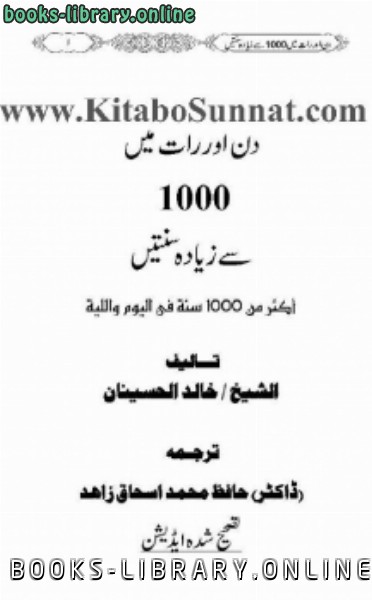
دن اور رات میں 1000سے زیادہ سنّتیں PDF
قراءة و تحميل كتاب دن اور رات میں 1000سے زیادہ سنّتیں PDF مجانا
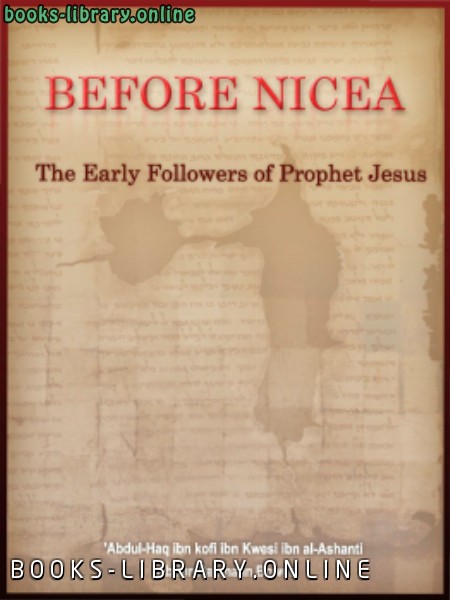
BEFORE NICEA The Early Followers of Prophet Jesus PDF
قراءة و تحميل كتاب BEFORE NICEA The Early Followers of Prophet Jesus PDF مجانا

A critical Analysis of the Modernists and Hadeeth Rejecters PDF
قراءة و تحميل كتاب A critical Analysis of the Modernists and Hadeeth Rejecters PDF مجانا
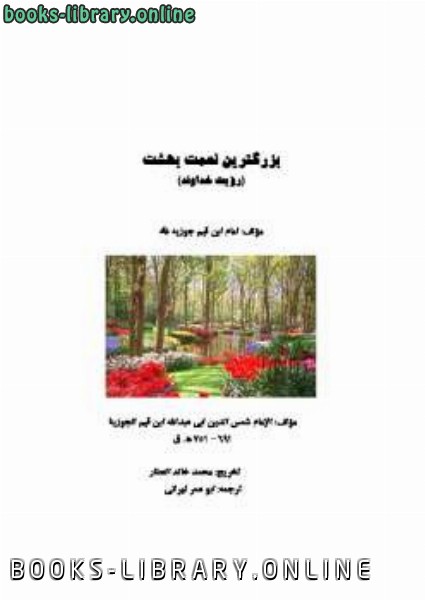
بزرگترین نعمت بهشت رویت خداوند جل جلاله PDF
قراءة و تحميل كتاب بزرگترین نعمت بهشت رویت خداوند جل جلاله PDF مجانا

